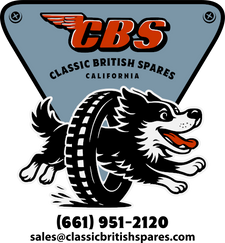
5 Steps: How To Start A Vintage Triumph Motorcycle

Let's face it whether you are a new motorcycle rider or a seasoned motorcycle rider there are many ways to start a vintage Triumph motorcycle.
Today I will cover and show you how I personally start my vintage motorcycle using the 5 steps below. These steps can also be applied on BSA and Norton motorcycles - or any motorcycle. Keep in mind that everyone has their own technique of how to start a motorcycle.
It's not rocket science but there are a few steps that you need to perform before you start the bike or attempt to start it. Each step will aide you in the process. Alright let's get right to it.
Step #1 - Ignition

You would be surprised how many times I have tried to start my bike forgetting to turn the ignition key on!
It was only until I I noticed that the power was off - sounds like a dumb mistake but this happens to many folks quite often. This is why step #1 is ignition - make sure you turn the ignition on and check that you are getting power. A full battery is recommended.
Step #2 - Fuel
Most Triumph gas tanks have two petcocks – one is the main and one is the reserve. A "petcock" is also know as a fuel "tap" or "fuel valve".
I typically turn on the main petcock while I leave the reserve petcock off. For those that only have one petcock valve you can go ahead and turn it on.
A rich condition usually aides with start ups just like when a choke is activated. There is no need to pump the tickler - simply hold the tickler down until gas starts to run out.">
Step #3 - Tickle The Carbs
Yes I said tickler and some Yankees also call it a primer - but if you're a true British motorcycle enthusiast it's called a tickler.
Tickling the carbs allows a lever that pushes down on the float bowl thus causing more fuel to enter the fuel bowl or chamber causing a rich startup condition.
A rich condition usually aides with start ups just like when a choke is activated. There is no need to pump the tickler - simply hold the tickler down until gas starts to run out.
Step #4 - Free The Plates

I like to call step #4 - freeing the clutch plates.
Freeing the clutch plates is when you allow the clutch to become unstuck. Many times when a motorcycle sits overtime the clutch plates become stuck.
To free the clutch plates you must pull in the clutch and give the kickstart lever a swing down a few times until your clutch has broke free or become unstuck.
You may notice that when you have the clutch pulled in and you swing on the kick start lever that the kick start lever does not disengage - that is because the clutch plates are not free.
Typically when you pull in the clutch you should be able to push the kickstart lever down without feeling compression if the clutch plates are disengaged on a vintage Triumph motorcycle.
Also when you do not free the clutch your transmission gears may grind when you shift into first gear.
Step #5 - Starting

Once steps #1 - #4 have been properly executed you can now proceed to starting your bike
Some vintage motorcycles require more commitment than others when swinging on the kick start lever.
So so there you have it - if you apply the steps above it will help you get your vintage British motorcycle started.
Thanks for reading today's blog post - don't forget to check out some of our other posts on vintage Triumph motorcycles. Click here to check out our content.



Stuart Freestone
I have a 1946 Triumph 3t – which often requires multiple kicks … she’s a bit awkward – that’s my spin on it – once going a joy to hear
Peter Wheeler
My 1970 trophy 650 is also a tough start for my 140lb body, it usually starts on 2nd or 3rd kick. I put a single Mikuni carb with choke that helps a lot!
Bop
Steve, Just hold down each carb tickler until there’s a bit of gas leaking out of each carb. There’s no need to hold the the ticker down after the engine is running. If I understand what your doing right.
Steve
Just bought a 1970 Triumph 650 with a 750 kit and two Dellorto carbs. On a cold start using the carb tickler levers, with the throttles closed, it starts easily but at a very high rpm until I can lift the tickler levers. Any suggestions? I do not like the high rpm start on a cold engine.
Steve
Just bought a 1970 Triumph 650 with a 750 kit and two Dellorto carbs. On a cold start using the carb tickler levers, with the throttles closed, it starts easily but at a very high rpm until I can lift the tickler levers. Any suggestions? I do not like the high rpm start on a cold engine.